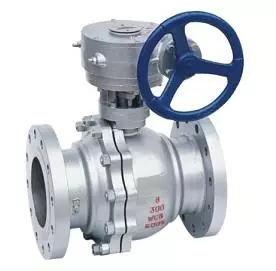Reasons Causing Sealing Faces of Valves Damage
Reasons causing sealing faces of valves damage can be classified into factitious damage and natural damage. Factitious damage includes culpable design, unskilled manufacturing, improper selection, inappropriate installation, misuse and lack of maintenance. Natural damage is the abrasion under the condition of valves proper operation, due to unavoidable erosion and washout by media to sealing faces.
Mechanical damage
Sealing faces are bruised, impacted or shoved during turning on-off. Between two sealing faces, atoms permeate with each other and ooze under high temperature and pressure, resulting in conglutination. When sealing faces move together, conglutination is broken easily. The higher roughness on surface of sealing faces is, conglutination is broken easier. When regulating valves sealing, disc impacts and shoves sealing faces during falling back, causing partial abrasion on surface of sealing faces or indentation.
Washout by media
Media wear, wash or cavitate sealing faces. Under definite velocity, floating granules in media offend sealing faces, resulting partial damage. High speed media wash sealing faces directly, damaging partially. When media combining flow or vaporizing partly, explosion bubbles are generated, which impact surface of sealing faces and causing part damage to sealing faces. Washout by media adding with chemical erosion, sealing faces are etched strongly.
Electrochemical etching
Due to contact between sealing faces, sealing faces and sealing bodies, sealing face and body and concentration difference or oxygen concentration of media, potential difference are generated and results in electrochemical etching. Positive pole sealing face is etched.
Chemical erosion of media
When media near sealing faces do not generate electric current, media contact directly with sealing faces and result in chemical action, eroding sealing faces.
Improper selection and harmful handle
Valves are not selected according to operation conditions. Block valves are used as throttle valves, which resulting in oversize sealing specific pressure, excessively fast sealing and imprecise sealing. Sealing faces are eroded and wear.

